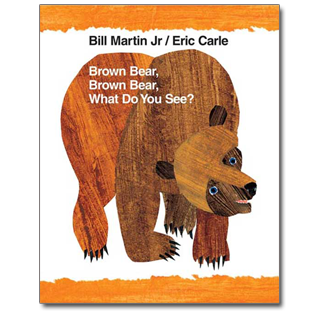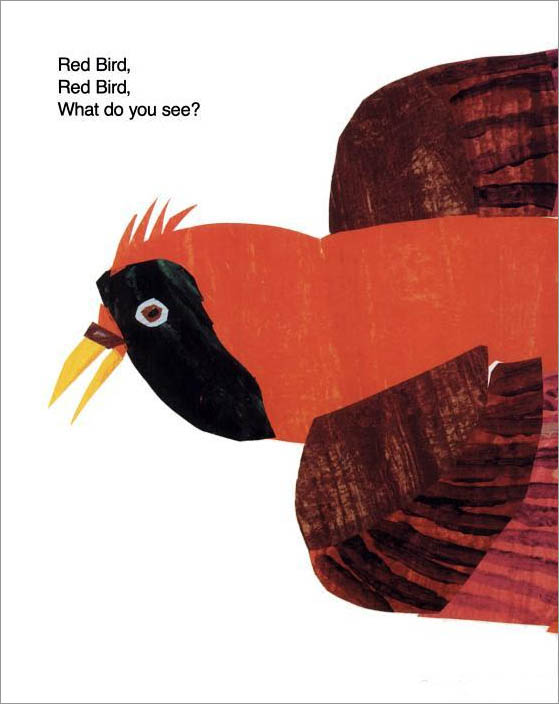
A FEW OTHER EVENTS FOR
MARCH 20:
- Happy birthday Mitsumasa Anno (Anno’s Counting Book), Lois Lowry (The Giver, Number the Stars), Ellen Conford (Jenny Archer series), Pamela Sargent (Child of Venus), and Louis Sachar (Holes).
- It’s the birth date of Fred Rogers (1928–2003) When a Pet Dies, and Shigeo Watanabe (1928–2006), Ice Cream Falling.
- In 1852, Harriet Beecher Stowe’s Uncle Tom’s Cabin is published. It was the best selling novel of the nineteenth century and is credited for fueling the American Civil War because of its anti-slavery message.
- It’s Rotten Sneaker Day. (Ugh!) Read Rotten Ralph by Jack Gantos, illustrated by Nicole Rubel.
Born on March 20, 1916, in Hiawatha, Kansas, Bill Martin Jr. served as a teacher and textbook editor before he became a children’s book writer. Growing up in Kansas, he struggled with reading, but adored listening to his grandmother, who was a storyteller. Also, he was saved from a lifetime of hating books by a fifth grade teacher who read aloud twice a day. Martin discovered that he loved the sound and beauty of language.
Because Martin understood the difficulties of those who had trouble with the written word, he began to write stories, ones that read aloud beautifully. The fairy godmother of his writing career was none other than Eleanor Roosevelt; in 1945 she praised his self-published book, The Little Squeegy Bug, which eventually sold around a million copies.
Bill then received a Ph.D. from Northwestern University and became an editor for the Holt, Rinehart & Winston reading series. Although it was not unusual for those in his position to write stories to be included in the basal readers, Martin soon proved to be in a class by himself. In 1967 he wrote a patterned question and answer book Brown Bear, Brown Bear, What Do You See? and asked the then-unknown illustrator Eric Carle to contribute art. “Brown Bear/ Brown Bear/ What do you see?/ I see a red bird/ looking at me.” Although the book was successful as part of the series, it became an even greater hit when released in 1991 as an individual book. Recently, Brown Bear has been tastefully reformatted into a My First Reader, with some extra materials to help parents and educators. The text draws on all of Martin’s great strengths—rhythm, rhyme, the participation of children—to introduce a variety of animals, amphibians, and birds. Eric Carle fashions all these creatures with brilliant collage papers.
During Martin’s lifetime, he and Eric Carle also published Polar Bear, Polar Bear, What Do You Hear? and Panda Bear, Panda Bear, What Do You See? After Martin died, Carle read Martin’s manuscript for Baby Bear, Baby Bear, What Do You See? and decided to make a book, in honor of the man so influential in his career. After Carle finished the project, he created a very touching short video, ideal for sharing with children, in which he talks about Martin and their working relationship.
One day Bill came to Eric and said, “Da, da, Dah, Dah.” Or do you think it should be “Dah, Dah, Dah.” Eric said, “Bill I don’t know what you are talking about.” Martin replied, “First I get the rhythm, and then I fill in the words.” Small wonder then that Martin’s books, created with an understanding of how children learn to read, have been so influential in the education of babies and preschoolers. Martin believed that children did not need to understand every word of the text, they just needed to “assimilate the sounds, the music, and the poet’s vision.”
This would have been Bill Martin’s 95th birthday. Children the world over are so lucky that this educator, who had problems reading, dedicated his life to helping children find poetry, rhythm, and rhyme in their stories.
Here’s a page from Brown Bear, Brown Bear, What Do You See?:

Originally posted March 20, 2011. Updated for .













I think I’ve read this book more times than any other in my life…as a child, and now as a mom. My girls adore this story and we often recite it aloud on car trips. Really, we love all of Bill Martin’s books (and Eric Carle’s, for that matter).
I used to volunteer with Alzheimer’s patients, and one of them loved this book. I’d read it to her over and over again. Her family discovered her love of it when they had her home for a holiday and she lit up as she heard the book read to a child. They got her a copy, and she held onto it at all times. Even in the advanced stages of her disease, and the days before her death, her breathing always calmed and she appeared so peaceful when I read her this story. Her family buried her with her worn copy of the book. Each time I read this book to my own girls, I think of her.
Star: Thank you for sharing this amazing story about the power of a book.
I was lucky enough to receive a copy of this book from one of my favorite undergrad IN ARABIC. I had read and loved this book as a child and when my professor returned from a conference in Bahrain, she brought me this book as a gift (I was her intern at the time). It was so fascinating to see one of my favorite Eric Carle books, to read it “backwards,” and see how beautiful it was in Arabic as well as English.
“Knots on a Counting Rope” has long been a favorite among families with a blind child enrolled in our Children’s Braille Book Club. Bill Martin found a way to talk about blindness not as a stigma but as another way of being in the world.
What a touching and inspiring back story. It’s intriguing to know that Martin had problems learning to read – what a gift to be able to share this story with children who are first learning sounds, words, and rhythms – especially if its hard for them, as well (as it is for so many). Makes me re-think using this book in new ways for the elementary school set as well as preschoolers. Thanks for sharing!
This is the book that turned me into a thespian. In kindergarten we had to create masks based on the animals in the book and we fashioned a pageant around groups of us reading for the various parts. I was so entranced by it, watching as we slowly came to embody animal charscters (as much as 6 year olds can haha) that I knew I wanted to do more theater or “dressing up” as I called it! After Brown Bear Brown Bear I did theatre for the next 17 years.
The title on this book always leads me right into a sing songy version of the text. I love being able to say Brown Bear Brown Bear what do you see…..My favorite page in this book is the page with the teacher staring back at me. Carle’s illustrations are so vivid and the teacher’s eyes are so clear and multi-dimensional.
It’s interesting how many authors/illustrators/editors/etc. initially had trouble reading when they were children (not just Bill Martin but also Wendell Minor in a post a few days ago, and I just read about editor Richard Jackson’s struggles as well). I always wonder what lessons we can take from them when working with struggling readers nowadays, and I definitely think the part about reading out loud is crucial.
I have recently begun working with ESL preschoolers, and this month we are studying “Brown Bear, Brown Bear.” I have so enjoyed watching their faces as they master the many elements hidden inside this seemingly simple book – from colors, to rhythm, to animal names; even just mastering the skill of predicting the next page has been so empowering for my students. Although I have always enjoyed this book and respected both Martin and Carle, this experience has given me a whole new lens in which to view “Brown Bear,” and once again, I like what I see.